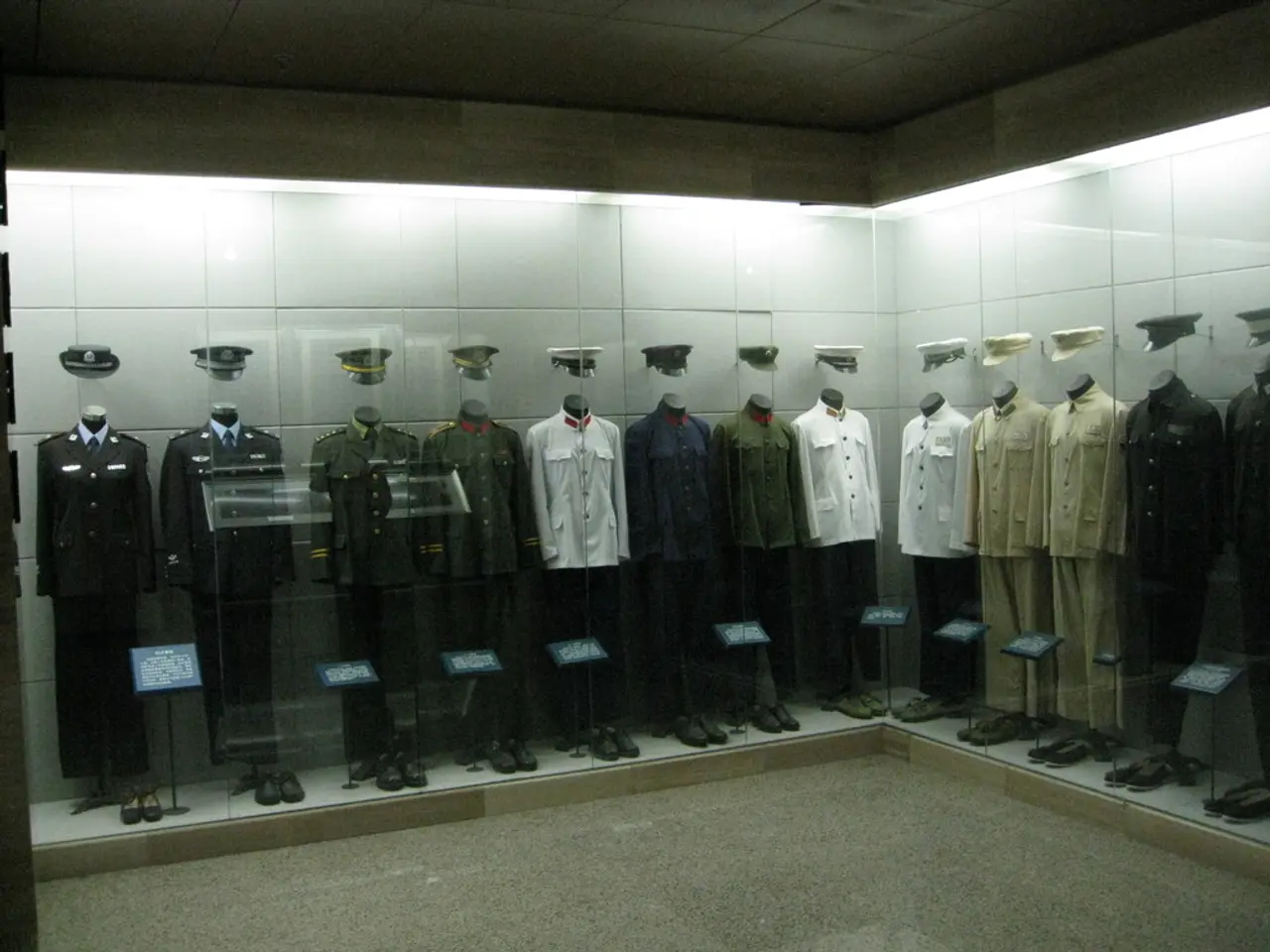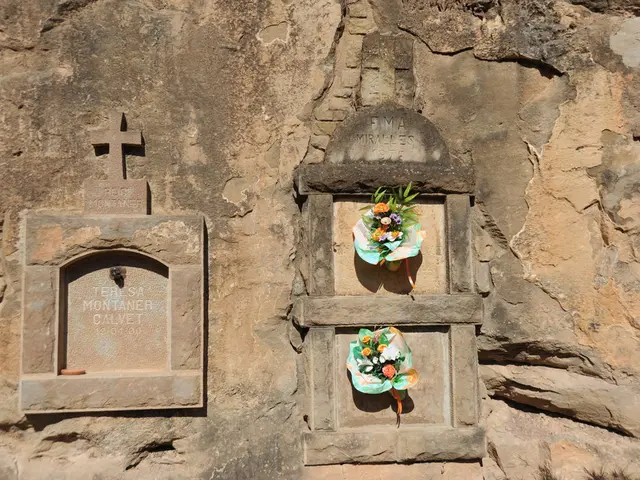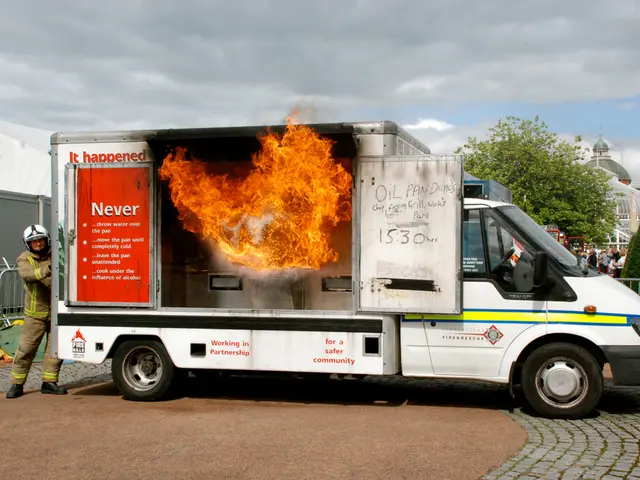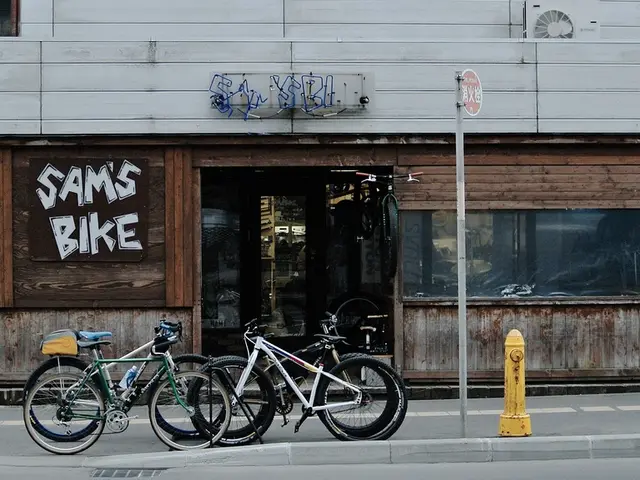Evolution of British Airways Uniforms Over Time
British Airways Uniforms: A Century of Evolution and Style
British Airways, a prominent name in the aviation industry, has a rich history that extends back to the 1930s. This British carrier, founded on March 31, 1974, and based near its main airport in London, England, serves over 180 destinations across six continents, generating around $13 billion in revenue annually [1,2].
The design of British Airways uniforms has been a subject of interest in fashion discussions, with notable contributions from designers like Julien Macdonald, Oswald Boateng, and Paul Costelloe. The evolution of these uniforms reflects changes in fashion, airline branding, and corporate identity [3].
In the early days of the airline's historical roots in the early 20th century, uniforms were practical and utilitarian, inspired by military uniforms. This can be seen in the uniforms used by British Overseas Airways Corporation (BOAC), the predecessor of British Airways [6].
As the years passed, uniforms began to reflect the style of the era. For instance, the uniforms of the 1970s and 1980s were designed to reflect the style of the time, while the 1990s saw the introduction of more comfortable and classic designs by Paul Costelloe [3].
In 2003, Julien Macdonald designed a uniform that is still remembered for its elegance and style. The design included a dark blue jacket, plain white shirt, simple hat, and scarf for female crew, and a tie for males [7]. This design contributed to the success and high regard of British Airways.
More recently, British Airways introduced new cabin crew uniforms starting from 2023, featuring sleek, dark designs that emphasize a contemporary and elegant look while maintaining professional standards [4].
To celebrate its centenary in 2019, staff donned heritage uniforms replicating styles from the 1930s onward, symbolizing the airline's connection to luxury early air travel and its British roots [5]. British European Airways, founded in 1946, introduced a new era in aviation clothing with its focus on fashion and style [8].
In the post-World War 2 era, BOAC uniforms began to reflect regional clothing, such as saris and kimonos. This trend continued with British Airways, as seen in the more feminine and graceful uniforms designed by Sylvia Ayton for British European Airways in 1960 [9].
British Airways' uniforms have paralleled shifts in corporate branding and livery design, reflecting the airline's identity as a national carrier. While the uniforms have adapted to modern trends and corporate strategies, heritage and British symbolism have remained consistent themes in their design evolution [1,3,4].
In 2023, Oswald Boateng, the latest designer to work on British Airways uniforms, followed in the footsteps of Julien Macdonald, aiming to create a uniform that is both stylish and practical, embodying the spirit of British Airways [10].
The evolution of British Airways uniforms is a testament to the airline's commitment to style, comfort, and professionalism. From the practical uniforms of the early 20th century to the contemporary and elegant designs of today, these uniforms have played an essential role in shaping the airline's image and identity.
References: 1. British Airways - Wikipedia 2. British Airways - Revenue 3. British Airways Uniforms: A Look Back 4. British Airways unveils new uniforms for cabin crew 5. British Airways staff wear heritage uniforms to mark centenary 6. BOAC - Wikipedia 7. Julien Macdonald - Wikipedia 8. British European Airways - Wikipedia 9. Sylvia Ayton - Wikipedia 10. Oswald Boateng - Wikipedia
- British aviation pioneers, such as British Airways, have significantly impacted the fashion-and-beauty industry throughout their history.
- The design evolution of uniforms in the aerospace sector, like those of British Airways, mirrors changes in the technology and lifestyle of a particular era.
- The British aviation industry, represented by companies like British Airways, has used uniforms as a means to reflect their corporate identity and branding over the decades.
- Finance plays a crucial role in the airlines' ability to invest in the design and production of uniforms, making it a significant aspect of the aviation and fashion-and-beauty industries' relationship.








